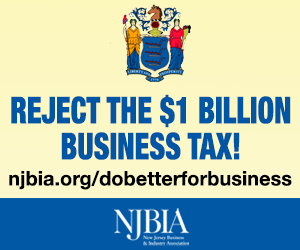Monmouth National: COVID Independence Day?

Months ago, President Joe Biden expressed hope that the Fourth of July holiday would “begin to mark our independence from this virus.” The Monmouth University Poll, though, finds a sizable number of Americans will be holding back on their typical holiday festivities this weekend. The poll also finds that summer vacation plans are still below normal levels, but better than they were after Covid altered the rhythm of American life last year.
Just over half (54%) of American adults plan to attend an Independence Day barbecue this year, which is down from a pre-pandemic level of 69% with cookout plans in 2019. The number of people who plan to attend a professional fireworks show (26%) is half of what it was two years ago (51%). There will also be fewer people attending July 4th parades (18%, versus 28% in 2019) and slightly fewer people setting off their own fireworks (26%, versus 31% in 2019). Republicans are somewhat more likely than Democrats to say they will partake in all four of these activities. There was more parity across the parties two years ago for barbecues and fireworks.
“Partisan differences in holiday activities are tied to Covid. As with other aspects of socializing during the pandemic, Democrats are more cautious than Republicans about venturing into crowds on July 4th,” said Patrick Murray, director of the independent Monmouth University Polling Institute.
About half (48%) of the public plans to take a summer vacation this year. This is lower than typical levels but higher than actual plans for 2020. Last June, 63% said they had been planning a summer vacation before Covid hit, but only 26% said it was probable that they would actually take some type of summer trip in 2020.
Overall, 34% of Americans say their summer vacation plans this year are about what they would typically do, while 26% say they have either scaled back plans or canceled their usual summer vacation plans altogether. Another 14% of the public will be traveling somewhere within 200 miles of their home this summer, 27% will be vacationing farther away in the U.S., and just 5% will be traveling to another country. Before the nation’s summer plans were altered by the pandemic last year, 13% said they had been planning a vacation closer to home, 33% planned to travel farther than 200 miles, and 17% intended to vacation in another country. After Covid hit, 11% planned a trip close to home, 12% were planning to travel farther afield, and just 3% planned to vacation outside the U.S.
“Overseas trips have taken the biggest hit, but the number taking a vacation closer to home really hasn’t changed. While some travelers are downgrading their plans, others are simply opting to wait at least another year before resuming summer travel,” said Murray.
One-third of the public says that the pandemic has been either the most important factor (10%) or a major factor (23%) in planning a summer vacation this year. Another 25% say Covid has been a minor factor and 42% say it has not been a factor. Among those who have scaled back or canceled vacation plans this year, 22% say the pandemic was the most important factor in their decision and another 39% call it a major factor.
Interestingly, while higher-earning families are more likely to be taking a vacation this summer – as they are in any typical year – income level is not a determining factor in whether 2021 plans are different from 2020 plans. For example, 64% of those earning over $100,000 are planning a summer vacation this year, which is 13 points lower than the number who had pre-pandemic plans last year but 28 points higher than the number of upper income earners who said they would probably still take a vacation in 2020 even with the Covid outbreak. In the middle income category ($50,000 to $100,000), 49% plan to take a vacation this summer, off by 15 points from pre-pandemic plans but 21 points above probable plans last year. Among those earning less than $50,000, 40% plan to take a vacation this summer, down by 14 points from pre-pandemic levels, but 21 points higher than probable plans last year. Among 2021 vacationers, about 1 in 4 in all income groups report scaling back their typical summer plans this year.
The Monmouth University Poll was conducted by telephone from June 9 to 14, 2021 with 810 adults in the United States. The question results in this release have a margin of error of +/- 3.5 percentage points. The poll was conducted by the Monmouth University Polling Institute in West Long Branch, NJ.
QUESTIONS AND RESULTS
(* Some columns may not add to 100% due to rounding.)
[Q1-18 previously released.]
19. Looking ahead to the 4th of July holiday coming up, do you plan to do any of the following to celebrate? [ITEMS WERE ROTATED]
|
TREND: |
Yes |
No |
(VOL) Don’t know |
(n) |
|
Attend a barbecue |
54% |
42% |
4% |
(810) |
|
— June 2019 |
69% |
27% |
3% |
(751) |
|
|
|
|
|
|
|
Go to a parade |
18% |
80% |
2% |
(810) |
|
— June 2019 |
28% |
69% |
3% |
(751) |
|
|
|
|
|
|
|
Go to a professional fireworks show |
26% |
72% |
2% |
(810) |
|
— June 2019 |
51% |
46% |
4% |
(751) |
|
|
|
|
|
|
|
Set off your own fireworks |
26% |
72% |
2% |
(810) |
|
— June 2019 |
31% |
67% |
2% |
(751) |
|
|
|
|
|
|
20. Are you planning to take a trip this summer for your vacation, or not?
|
|
June |
|
Yes, planning |
48% |
|
No, not planning |
49% |
|
(VOL) Don’t know |
3% |
|
(n) |
(810) |
20A. Are you planning to go somewhere within 200 miles of your home, somewhere farther away in the United States, or somewhere outside the country? [If MULTIPLE TRIPS: In this case let’s talk about the longest trip in time.]
|
|
June |
|
Within 200 miles of your home |
14% |
|
Farther away in the United States |
27% |
|
Outside the country |
5% |
|
(VOL) Don’t know |
1% |
|
No trip planned (from Q20) |
52% |
|
(n) |
(810) |
21. Would you describe your summer plans as being about what you typically would do for vacation or not up to the same scale as your normal vacation plans? [If NO PLANS: Do you typically take a vacation in the summer, or not usually?]
|
|
June |
|
Plans are typical |
34% |
|
Not same scale/canceled |
26% |
|
(VOL) Plans bigger than usual |
1% |
|
Usually no summer vacation |
38% |
|
(VOL) Don’t know |
1% |
|
(n) |
(810) |
22. How much of a factor has the pandemic been in deciding on your vacation plans for this summer – has it been the most important factor, a major factor, a minor factor, or not a factor?
|
|
June |
|
Most important factor |
10% |
|
Major factor |
23% |
|
Minor factor |
25% |
|
Not a factor |
42% |
|
(VOL) Don’t know |
0% |
|
(n) |
(810) |
[Q23-39 previously released.]
METHODOLOGY
The Monmouth University Poll was sponsored and conducted by the Monmouth University Polling Institute from June 9 to 14, 2021 with a national random sample of 810 adults age 18 and older. This includes 281 contacted by a live interviewer on a landline telephone and 529 contacted by a live interviewer on a cell phone, in English. Telephone numbers were selected through a mix of random digit dialing and list-based sampling. Landline respondents were selected with a modified Troldahl-Carter youngest adult household screen. Monmouth is responsible for all aspects of the survey design, data weighting and analysis. The full sample is weighted for region, age, education, gender and race based on US Census information (ACS 2018 one-year survey). Data collection support provided by Braun Research (field), Dynata (RDD sample), and Aristotle (list sample). For results based on this sample, one can say with 95% confidence that the error attributable to sampling has a maximum margin of plus or minus 3.5 percentage points (unadjusted for sample design). Sampling error can be larger for sub-groups (see table below). In addition to sampling error, one should bear in mind that question wording and practical difficulties in conducting surveys can introduce error or bias into the findings of opinion polls.
|
DEMOGRAPHICS (weighted) |
|
Self-Reported |
|
24% Republican |
|
44% Independent |
|
32% Democrat |
|
|
|
49% Male |
|
51% Female |
|
|
|
30% 18-34 |
|
33% 35-54 |
|
38% 55+ |
|
|
|
63% White |
|
12% Black |
|
16% Hispanic |
|
9% Asian/Other |
|
|
|
69% No degree |
|
31% 4 year degree |
|
MARGIN OF ERROR |
|||
|
unweighted sample |
moe |
||
|
TOTAL |
|
810 |
3.5% |
|
REGISTERED VOTER |
Yes |
758 |
3.6% |
|
No |
52 |
13.6% |
|
|
SELF-REPORTED PARTY ID |
Republican |
193 |
7.1% |
|
Independent |
352 |
5.2% |
|
|
Democrat |
251 |
6.2% |
|
|
IDEOLOGY |
Liberal |
167 |
7.6% |
|
Moderate |
345 |
5.3% |
|
|
Conservative |
269 |
6.0% |
|
|
GENDER |
Male |
403 |
4.9% |
|
Female |
407 |
4.9% |
|
|
AGE |
18-34 |
133 |
8.5% |
|
35-54 |
272 |
6.0% |
|
|
55+ |
401 |
4.9% |
|
|
CHILDREN IN HOME |
Yes |
182 |
7.3% |
|
No |
625 |
3.9% |
|
|
RACE |
White, non-Hispanic |
590 |
4.0% |
|
Other |
197 |
7.0% |
|
|
COLLEGE GRADUATE |
No degree |
416 |
4.8% |
|
4 year degree |
391 |
5.0% |
|
|
WHITE COLLEGE |
White, no degree |
302 |
5.6% |
|
White, 4 year degree |
287 |
5.8% |
|
|
INCOME |
<$50K |
269 |
6.0% |
|
$50 to <$100K |
256 |
6.1% |
|
|
|
$100K+ |
233 |
6.4% |
Crosstabs may be found in the PDF file on the report webpage: https://www.monmouth.edu/polling-institute/reports/monmouthpoll_US_062821/









Leave a Reply